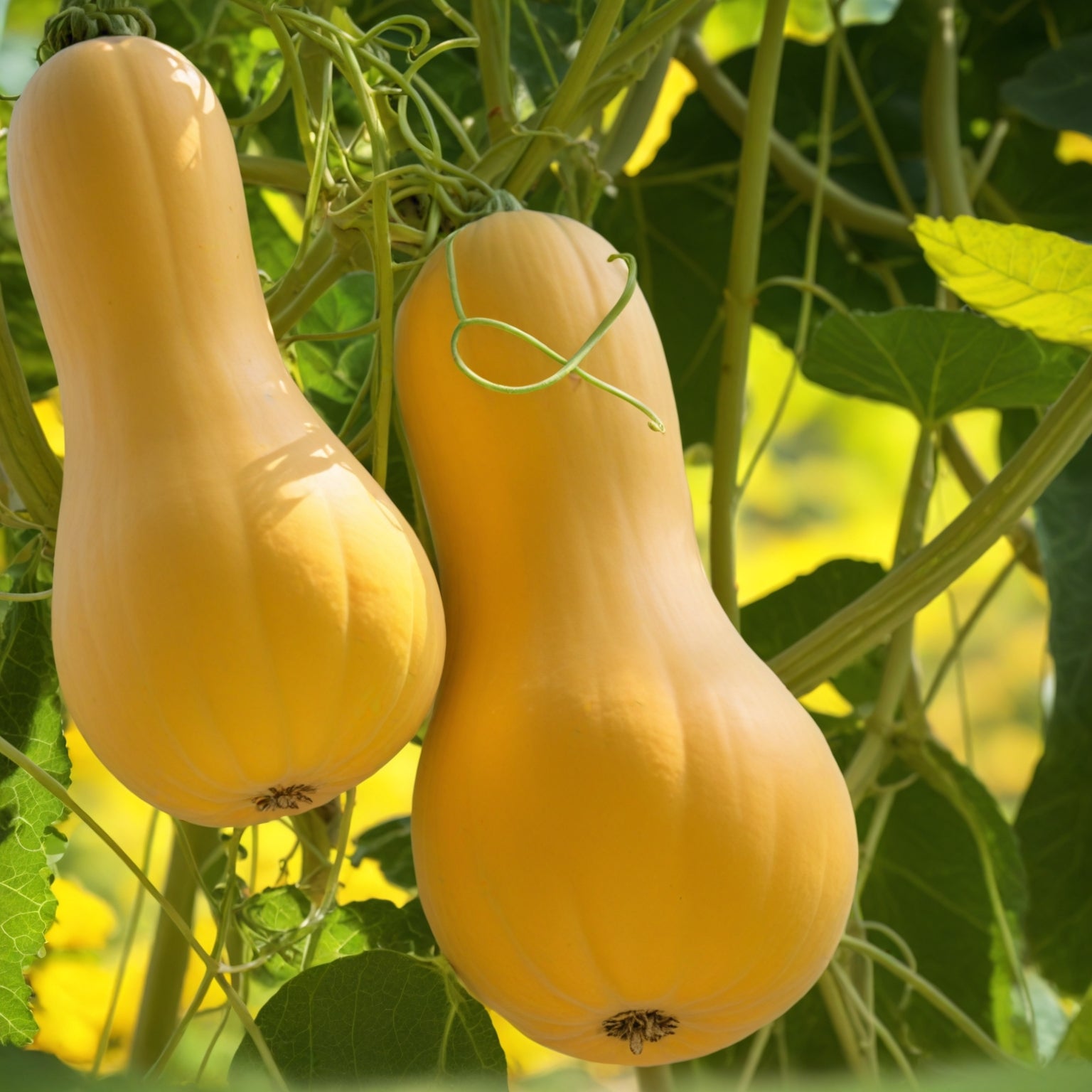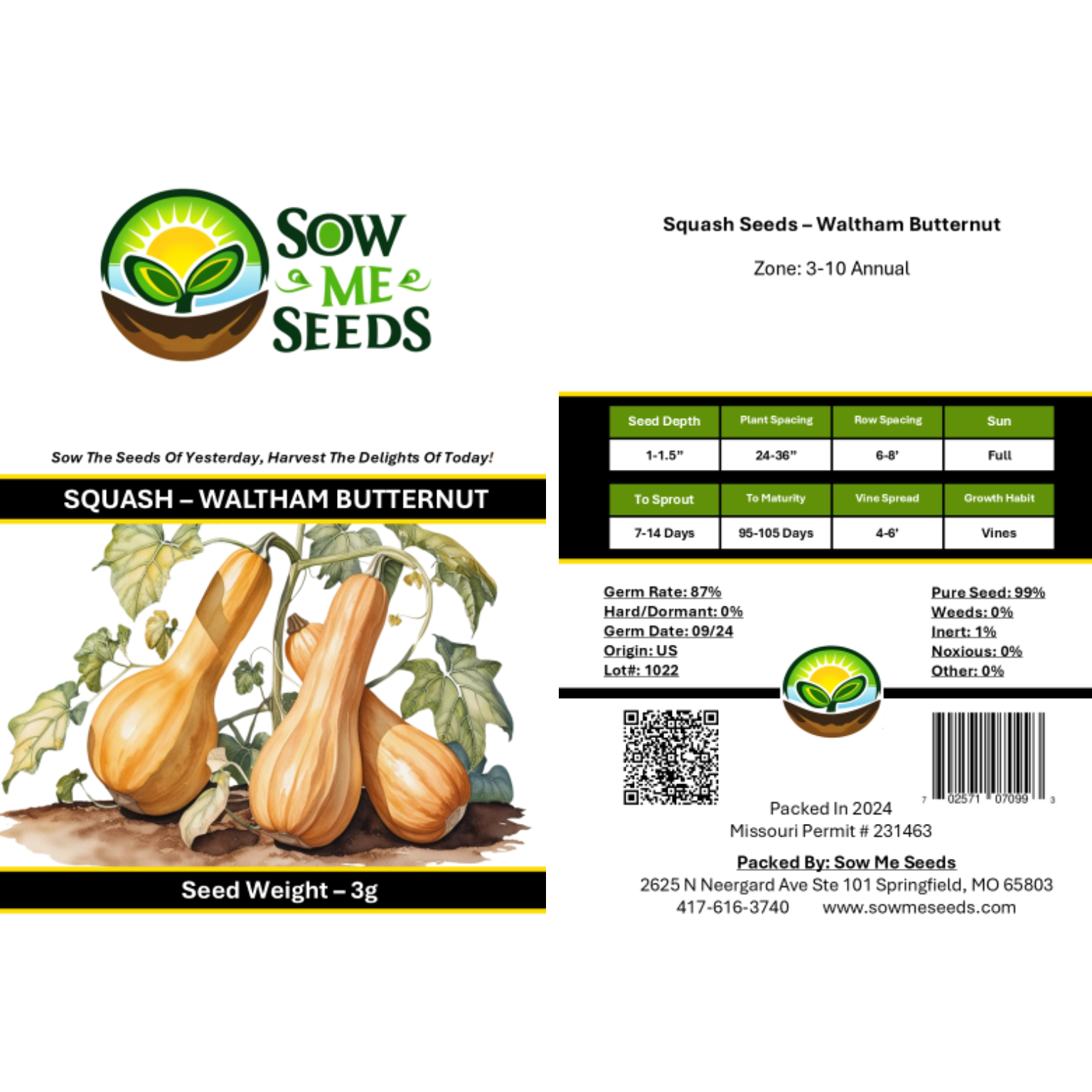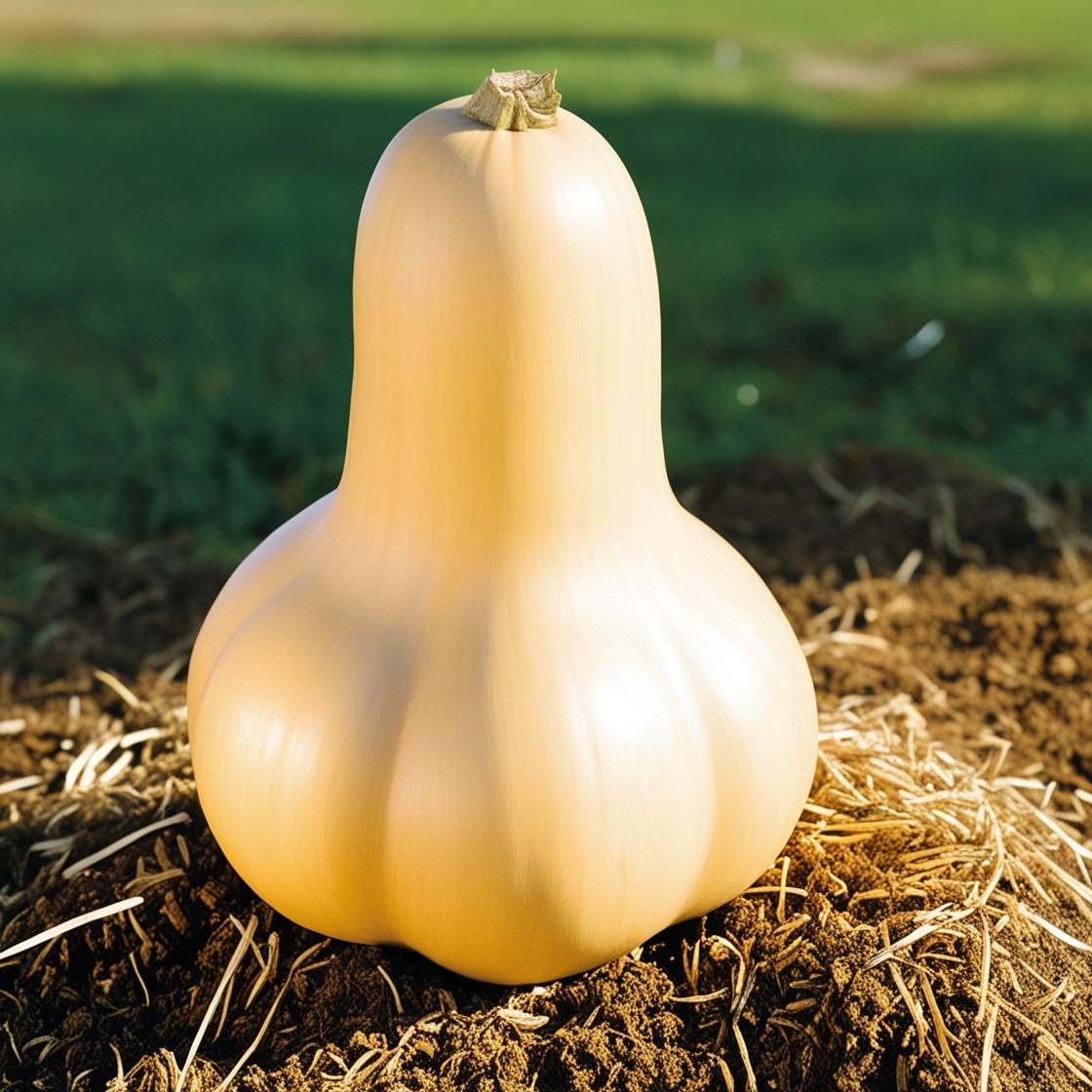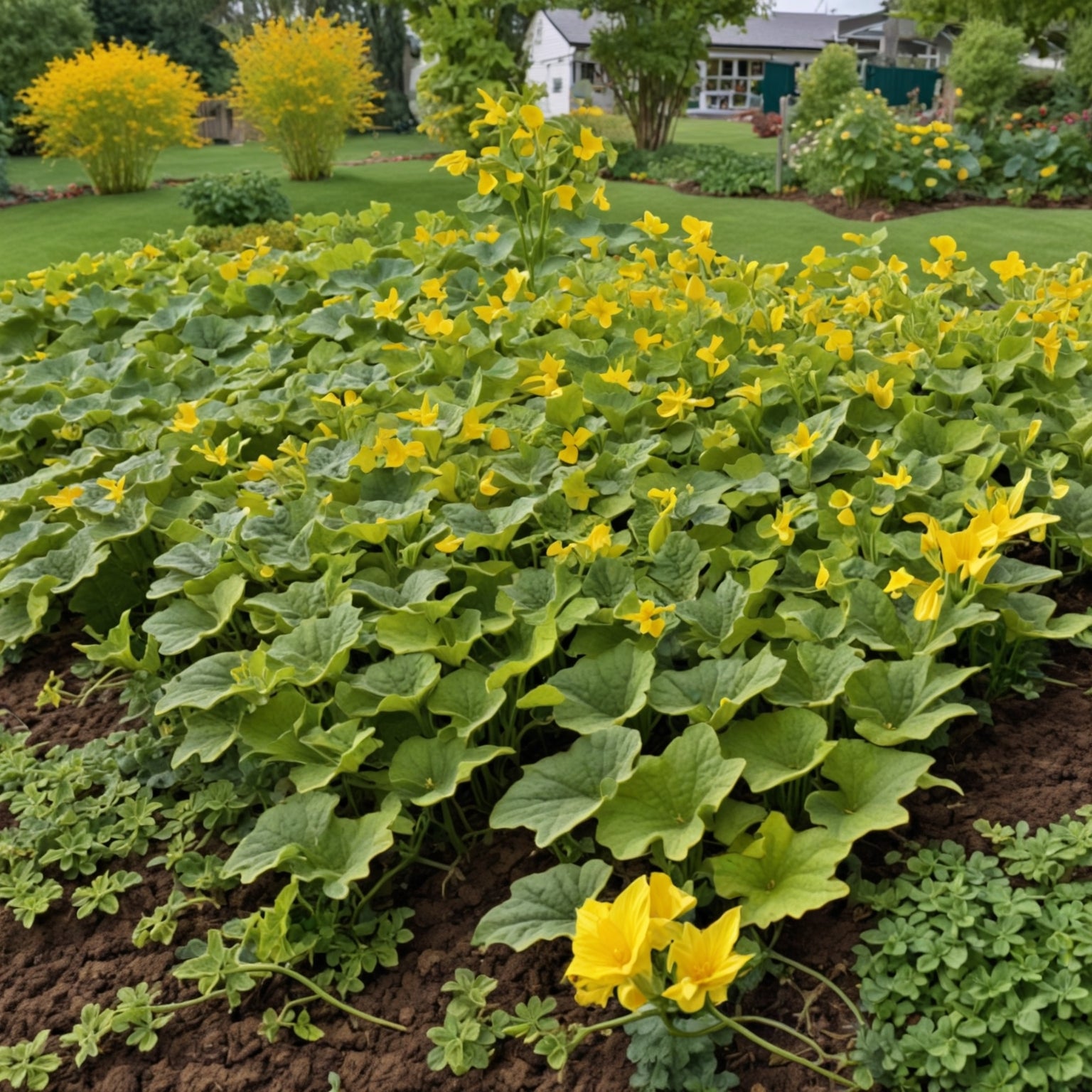- Hardiness Zone: 3-11 Annual
Seed Depth: 1–1.5 inches
Seed Spacing: 24–36 inches
Row Spacing: 6–8 feet
Sunlight: Full sun
Days to Sprout: 7–14 days
Days to Maturity: 95–105 days
Growth Habit: Sprawling vine
Sunlight: Requires full sun, with at least 6–8 hours of direct sunlight daily.
Soil Type: Prefers well-drained, fertile soil with a pH of 6.0–7.5. Adding compost or organic matter improves growth.
When to Plant: Sow seeds directly outdoors after the last frost when soil temperatures reach at least 70°F.
Direct Sowing: Plant seeds 1–1.5 inches deep, spacing them 24–36 inches apart in rows 6–8 feet apart. Alternatively, plant in hills with 2–3 seeds per hill and thin to the strongest seedling.
Indoor Sowing: Start seeds indoors 3–4 weeks before the last frost for an earlier harvest. Transplant carefully to avoid root disturbance.
Succession Planting: Not typically needed; a single planting yields a long harvest window.
Watering: Water deeply and consistently, keeping the soil evenly moist but not soggy. Avoid overhead watering to reduce disease risk.
Fertilizing: Apply a balanced fertilizer at planting and switch to a phosphorus-rich fertilizer during flowering and fruiting stages.
Pruning: Trim excessive vines to focus energy on fruit development.
Pest and Disease Control: Monitor for squash bugs, vine borers, and powdery mildew. Use organic treatments and row covers as necessary.
When to Harvest: Harvest when the skin is tan, firm, and cannot be easily punctured with a fingernail, typically 95–105 days after planting. The stem should be dry and woody.
How to Harvest: Use a sharp knife to cut squash from the vine, leaving 2–4 inches of stem attached to extend storage life. Handle carefully to avoid bruising.
Seed Collection: Scoop seeds from fully ripened squash, rinse, and dry thoroughly.
Storing Seeds: Store seeds in an airtight container in a cool, dry place.
Why You’ll Love It
Sweet, creamy flesh: Perfect for roasting, soups, and more
Reliable harvests: Vigorous vines produce uniform fruits
Long storage life: Keeps well through the winter
Heirloom quality: Trusted flavor and performance for generations
Ideal for fall meals: A staple for cozy, cool-weather cooking
Plant Characteristics
Appearance: Bell-shaped tan fruits with deep orange flesh
Height: Vines grow 18–24" tall and spread 6–10 feet
Growth Habit: Vining — allow room to sprawl or grow on a sturdy trellis
Flavor and Culinary Uses
Flavor Profile: Sweet, nutty, and deepens after curing
Culinary Uses: Roast, puree into soup, mash, or use in pies and stews
Best Dishes: Butternut squash soup, roasted squash with herbs, savory casseroles
Companion Planting Tips
Good Companions: Corn, beans, marigolds, and nasturtiums
Avoid Planting Near: Potatoes or competing vining crops
Bonus Benefit: Long shelf life — enjoy your harvest throughout the winter
Common Issues and Solutions
Powdery Mildew: Improve air flow and water at the base of the plant
Squash Vine Borers: Use row covers early and inspect stems often
Low Pollination: Add pollinator-friendly flowers nearby
Fruit Rot: Avoid overly wet soil and rotate crops yearly
Seeds Per Packet
| 3g | Approximately 30 |
| 10g | Approximately 100 |
Why You’ll Love It
Sweet, creamy flesh: Perfect for roasting, soups, and more
Reliable harvests: Vigorous vines produce uniform fruits
Long storage life: Keeps well through the winter
Heirloom quality: Trusted flavor and performance for generations
Ideal for fall meals: A staple for cozy, cool-weather cooking
Plant Characteristics
Appearance: Bell-shaped tan fruits with deep orange flesh
Height: Vines grow 18–24" tall and spread 6–10 feet
Growth Habit: Vining — allow room to sprawl or grow on a sturdy trellis
Flavor and Culinary Uses
Flavor Profile: Sweet, nutty, and deepens after curing
Culinary Uses: Roast, puree into soup, mash, or use in pies and stews
Best Dishes: Butternut squash soup, roasted squash with herbs, savory casseroles
Companion Planting Tips
Good Companions: Corn, beans, marigolds, and nasturtiums
Avoid Planting Near: Potatoes or competing vining crops
Bonus Benefit: Long shelf life — enjoy your harvest throughout the winter
Common Issues and Solutions
Powdery Mildew: Improve air flow and water at the base of the plant
Squash Vine Borers: Use row covers early and inspect stems often
Low Pollination: Add pollinator-friendly flowers nearby
Fruit Rot: Avoid overly wet soil and rotate crops yearly
Seeds Per Packet
| 3g | Approximately 30 |
| 10g | Approximately 100 |






Share and get 15% off!
Simply share this product on one of the following social networks and you will unlock 15% off!